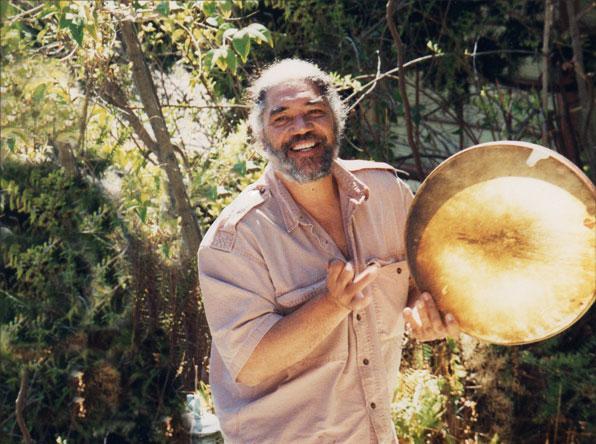Bruce Langhorne: The ‘Tambourine Man’ who inspired Bob Dylan
Bob Dylan was inspired to write his classic ‘Mr Tambourine Man’ after Langhorne, who played on a number of his records, turned up for a recording session with a large Turkish drum with bells

Your support helps us to tell the story
From reproductive rights to climate change to Big Tech, The Independent is on the ground when the story is developing. Whether it's investigating the financials of Elon Musk's pro-Trump PAC or producing our latest documentary, 'The A Word', which shines a light on the American women fighting for reproductive rights, we know how important it is to parse out the facts from the messaging.
At such a critical moment in US history, we need reporters on the ground. Your donation allows us to keep sending journalists to speak to both sides of the story.
The Independent is trusted by Americans across the entire political spectrum. And unlike many other quality news outlets, we choose not to lock Americans out of our reporting and analysis with paywalls. We believe quality journalism should be available to everyone, paid for by those who can afford it.
Your support makes all the difference.Bob Dylan’s 1965 album Bringing It All Back Home was a magnificent staging post in the transition of the folk revival of the early Sixties into folk-rock. Probably its best-known track was “Mr Tambourine Man”, which was inspired by a man who played on every track of that seminal album – Bruce Langhorne, who has died of kidney failure at the age of 78.
Dylan was moved to write “Mr Tambourine Man” after Langhorne, who played on several early Dylan records, turned up for a recording session carrying a large Turkish drum with bells attached. But for Dylan it was “this gigantic tambourine. It was like, really big. It was as big as a wagon-wheel. He was playing, and this vision of him playing this tambourine just stuck in my mind.”
Langhorne was the unsung hero of Bringing It All Back Home, his liquid guitar lines especially notable on “Subterranean Homesick Blues”, “Maggie’s Farm” and “Mr Tambourine Man” itself. “If you had Bruce playing with you, that’s all you would need to do just about anything,” Dylan wrote – although their partnership had not started promisingly.
When he first came across Dylan, Langhorne was unimpressed. “I thought he was a terrible singer and a complete fake,” he recalled. “I didn’t really start to appreciate Bobby as unique until he started writing.”
Langhorne was born in 1938 in Tallahassee, where his father taught at the Florida Agriculture and Mechanical College for Negroes. He began learning the violin until he lost three fingers lighting a homemade rocket.
He began playing the guitar at 17, and always said that the accident contributed to his distinctive playing style. After living in Mexico for a while he moved to Greenwich Village and was soon caught up in the burgeoning folk revival. In 1963 he played on The Freewheelin’ Bob Dylan, the rising star’s second album, and in August that year he played alongside the singer and activist Odetta at the March on Washington, moments before Martin Luther King made his “I have a dream” speech.
Apart from Dylan – for whom he played on the 1973 soundtrack album Pat Garrett and Billy the Kid – Langhorne also worked with artists like Joan Baez, Richie Havens, Buffy Sainte-Marie and Gordon Lightfoot, and wrote the music for a clutch of Peter Fonda films, as well as Bob Rafelson’s Stay Hungry and Jonathan Demme’s Melvin and Howard.
But his best work was with Dylan. “The connection I had with Bobby was telepathic – and when I use that word I mean it,” he said. “The communication was always very strong.”
In the 1990s he founded a successful company marketing Brother Bru-Bru’s African Hot Sauce, a salt- and sugar-free sauce he devised after being diagnosed with diabetes. He suffered a stroke in 2015 and spent his final years in a hospice, and is survived by Janet Batchelor, his wife of 29 years. The Turkish drum – the “tambourine” – can be seen at the Experience Music Project in Seattle.
Bruce Langhorne, musician, born 11 May 1938; died 14 April 2017.
Join our commenting forum
Join thought-provoking conversations, follow other Independent readers and see their replies
Comments